Home>Interior Design>How To Design A Laundry Room: Expert Layout And Design Tips


Interior Design
How To Design A Laundry Room: Expert Layout And Design Tips
Modified: October 19, 2024
Discover expert tips for designing a functional and stylish laundry room with our interior design guide. Enhance your space with expert layout advice and optimize functionality.
(Many of the links in this article redirect to a specific reviewed product. Your purchase of these products through affiliate links helps to generate commission for Storables.com, at no extra cost. Learn more)
Introduction
Welcome to the world of interior design, where every space has the potential to become a stunning and functional masterpiece. In this article, we will dive into the exciting realm of designing a laundry room. Gone are the days when laundry rooms were considered a mundane and utilitarian space. Today, homeowners are realizing the importance of creating a well-designed laundry area that not only serves its purpose but also adds value to the overall home aesthetic.
Designing a laundry room requires careful consideration of various factors, including the available space, the specific needs of the household, and an understanding of how to maximize functionality while maintaining a visually appealing look. Whether you have a small closet-sized laundry nook or an entire room dedicated to the task, the following tips and insights will guide you on your journey to creating a beautiful and efficient laundry space.
But before we dive into the specifics of designing a laundry room, it is important to assess the space at hand. Consider the size, layout, and existing features of the room. This will help you determine how best to utilize the space and make informed decisions during the design process.
Next, it’s essential to determine your laundry needs. Are you dealing with loads of laundry for a large family, or is it just a few loads a week for a couple or individual? Understanding your laundry habits and requirements will guide your appliance selection and storage solutions.
Speaking of appliances, choosing the right ones can make all the difference in a laundry room. From durable and efficient washers and dryers to specialty appliances like steamers or folding stations, invest in high-quality machines that meet your specific needs.
When it comes to storage solutions, organization is key. Utilize cabinets, shelves, and purpose-built storage systems to keep laundry essentials, cleaning supplies, and other items neatly arranged. Consider incorporating built-in hampers or sorting systems to streamline the laundry process.
In addition to storage, it is important to maximize countertop and workspace in the laundry room. A flat surface provides a convenient place for folding, sorting, and preparing laundry. Choose durable and easy-to-clean materials for the countertops while considering the overall aesthetic and style.
Lighting plays a crucial role in creating a functional and inviting laundry space. Consider a combination of overhead lighting for overall illumination and task lighting for focused areas such as the folding station or ironing area. Natural light can also make the space feel more welcoming and energizing.
Ensuring you have functional plumbing and proper ventilation is vital in a laundry room. Adequate plumbing will facilitate the connection of appliances, while proper ventilation will help control moisture and prevent mold or mildew buildup.
As for the flooring, choose a material that is durable, easy to clean, and moisture-resistant. Options like vinyl, tile, or laminate are popular choices for laundry rooms. Consider adding rugs or mats for added comfort and style.
Finally, don’t forget to add essential accessories and features that can enhance the functionality of your laundry room. Consider features like a hanging rod for drying clothes, a built-in ironing board, or a utility sink for added convenience.
By following these expert tips and design considerations, you can create a laundry room that not only meets your practical needs but also reflects your personal style and adds value to your home. So, let’s dive into the details of each aspect of laundry room design and turn your laundry routine into an enjoyable experience.
Key Takeaways:
- Transform your laundry room into an efficient and organized space by carefully considering layout, appliances, storage, lighting, plumbing, and flooring. Create a functional and visually appealing area that enhances your daily laundry routine.
- Incorporate essential accessories and features such as hanging rods, utility sinks, and smart appliances to enhance the functionality and convenience of your laundry room. Personalize the layout to meet your unique needs and style preferences for a well-equipped space.
Assessing your laundry room space
Before embarking on any design project, it is crucial to assess the space you have available. Understanding the dimensions, layout, and existing features of your laundry room will guide your decisions and help you make the most of your available space.
Start by measuring the dimensions of the room. Note the width, length, and height of the space. This will allow you to accurately plan the placement of appliances, storage units, and other elements in your laundry room design.
Next, consider the layout of the room. Are there any architectural features, windows, or doors that may impact the design and flow of the space? Take note of any obstacles or limitations that you need to work around.
Assess the available plumbing and electrical connections in the room. Ensure that they are in good working condition and located in convenient positions for your appliances. If needed, consult with a professional plumber or electrician to make any necessary adjustments or installations.
Consider the positioning of existing features, such as windows or utility sinks. These elements can influence your design decisions and should be incorporated into your overall plan. For example, if there is a window in the room, you may want to maximize natural light and arrange your layout accordingly.
Take note of any storage options already in place, such as cabinets or shelves. Evaluate their condition and functionality. Decide if they need to be updated or reconfigured to better suit your needs.
Lastly, assess the overall condition of the laundry room. Are there any structural or cosmetic issues that need to be addressed? This is the perfect time to plan any necessary repairs or renovations that will ensure your laundry room is in top-notch shape.
By thoroughly assessing your laundry room space, you can make informed decisions during the design process. This will help you optimize the functionality and aesthetics of your laundry room, creating a space that not only meets your practical needs but also brings joy and efficiency to your daily laundry routine.
Determining your laundry needs
Once you have assessed the space and layout of your laundry room, the next step in the design process is determining your laundry needs. Understanding how many loads of laundry you typically do, the types of garments you wash, and any specific requirements you may have will guide your appliance selection and storage solutions.
Take a moment to evaluate your laundry habits and routines. Consider the size of your household and the frequency of laundry loads. If you have a large family, you may need a washer and dryer with larger capacity to handle the volume of laundry. On the other hand, if you live alone or with a small family, a compact or stackable washer and dryer may be more suitable.
Think about the types of garments you typically wash. Do you have delicate fabrics that require gentle care? In that case, you may want to invest in a washer with specific settings for delicate items. Similarly, if you frequently deal with heavily soiled or stained clothing, consider a washer with a strong stain removal feature.
Consider any special requirements you may have for your laundry, such as sensitive skin or allergies. If you or your family members have sensitivities, you may want to choose a washer and dryer with advanced filtration or steam cleaning capabilities to ensure that your laundry is thoroughly cleaned and free from allergens.
Think about any additional laundry-related tasks you frequently do, such as ironing or steaming. If you find yourself spending a significant amount of time ironing clothes, you might consider investing in a washer and dryer set with a steam feature. This can help reduce wrinkles and make the ironing process easier and more efficient.
Another factor to consider is energy efficiency. As environmental consciousness grows, it is important to choose appliances that are energy efficient. Look for washers and dryers with high energy ratings to reduce your carbon footprint and save on utility costs in the long run.
In addition to the appliances, think about the storage solutions you need for your laundry room. Assess the amount of space you have and consider whether you require cabinets, shelves, or baskets for storing laundry supplies, cleaning products, and other items. Think about any specialized storage needs, such as a designated area for sorting and folding clothes.
By determining your laundry needs, you can make informed choices during the design process. This ensures that your laundry room is customized to your specific requirements, making laundry tasks easier, more efficient, and even enjoyable. So take the time to consider your laundry habits and needs before moving on to the next step of designing your dream laundry room.
Choosing the right appliances
When it comes to designing a laundry room, one of the most important considerations is choosing the right appliances. The washer and dryer you select will not only impact the functionality of the space but also play a significant role in the efficiency and effectiveness of your laundry routine. Here are some key factors to consider when choosing appliances for your laundry room.
The first consideration is the size of the appliances. Measure the available space in your laundry room to determine the maximum dimensions for your washer and dryer. Be mindful of any architectural features or obstacles that may impact the installation process. This will ensure that the appliances fit seamlessly into your design and allow for easy maneuverability in the room.
Next, consider the capacity of the appliances. This depends on your laundry needs and the size of your household. If you often wash heavy loads or have a large family, opt for appliances with larger capacities. On the other hand, if you live alone or have limited space, a compact or stackable washer and dryer may be more suitable.
Consider the features and settings offered by the appliances. Look for washers with a variety of cycle options, such as delicate, heavy-duty, and quick wash. This allows you to customize the wash based on the type of garments and level of soil. Similarly, dryers with different heat settings and sensor technology help prevent over-drying and protect your clothes from damage.
Energy efficiency is another crucial factor to consider. Look for appliances that have a high Energy Star rating. These appliances are designed to use less water and electricity, saving both the environment and your utility bills in the long run. Some washers even have a feature that allows for load sensing, automatically adjusting the water level based on the size of the load.
Pay attention to noise levels when selecting appliances. Front-loading washers tend to be quieter compared to top-loading ones. Similarly, look for dryers with sound-dampening technology that minimize noise during operation. This is especially important if your laundry room is near living spaces or bedrooms.
Consider the brand reputation and warranty offered by the manufacturer. Research customer reviews and ratings to gain insight into the reliability and durability of the appliances. Additionally, look for warranties that cover parts and labor for an extended period. This provides peace of mind and protection in case of any unforeseen issues.
Budget is another important factor to keep in mind. Set a realistic budget and prioritize the features and functionalities that are most important to you. It’s important to strike a balance between quality and affordability. Remember that investing in high-quality appliances ensures better performance and longevity, so it may be worth spending a little more upfront.
Finally, consider the aesthetics of the appliances. Nowadays, washers and dryers come in a variety of designs and finishes. Choose appliances that complement the overall design and style of your laundry room. This will create a cohesive and visually appealing space.
By considering these factors and doing your research, you can choose the right appliances that meet your specific needs and preferences. This will help create a laundry room that is efficient, functional, and visually pleasing, making your laundry routine a breeze.
Organizing storage solutions
An organized laundry room not only enhances functionality but also creates a visually appealing and efficient space. Storage solutions play a crucial role in keeping laundry essentials, cleaning supplies, and other items neatly arranged and easily accessible. Here are some tips to help you organize your laundry room storage effectively.
Begin by evaluating the available storage space in your laundry room. Take note of existing cabinets, shelves, or closets, and assess their functionality and condition. Determine if additional storage solutions are needed to accommodate your specific needs.
Consider installing overhead cabinets or shelving units to maximize vertical space. Utilize these for storing items that are not frequently used, such as extra detergent, cleaning supplies, or seasonal items. This helps keep the countertops and workspace clutter-free.
For frequently used items, consider open shelving or floating shelves. These provide easy access to everyday essentials like laundry detergents, fabric softeners, and stain removers. Use baskets or bins to group similar items together, making it easier to find what you need.
Utilize wall-mounted organizers or hooks. These are perfect for hanging items such as brooms, mops, ironing boards, and even drying racks. Wall-mounted organizers not only save floor space but also keep these items within reach and neatly organized.
Invest in laundry hampers or sorting systems to keep dirty laundry organized and off the floor. Choose a hamper with separate compartments for sorting different types of clothing or use color-coded bins to differentiate between light and dark laundry. This makes the sorting process more streamlined and efficient.
Add a folding or sorting station to your laundry room. This can be a built-in countertop or a portable table that provides a flat surface for folding clothes. Having a designated area for folding and sorting makes the process easier and prevents clothes from piling up in other areas of the room.
Consider the use of storage solutions that can be tucked away when not in use. Foldable drying racks or collapsible shelves are great options. These can be easily stored when not needed, maximizing the available space in your laundry room.
Do not forget about small items such as dryer sheets, clothespins, or sewing kits. Store these in small containers or organizers that can be placed on shelves or inside cabinets. This eliminates clutter and keeps these items easily accessible.
Labeling is an effective way to keep things organized in your laundry room. Use labels to categorize items in cabinets or baskets. This not only adds a decorative touch but also makes it easier to locate specific items when needed.
Make use of the inside of cabinet doors. Install hooks or organizers on the back of the doors to hang items like lint rollers, measuring cups, or small cleaning tools. This maximizes storage space and ensures that everything has its place.
Remember that organization is an ongoing process. Regularly declutter and assess your storage solutions to ensure they continue to meet your needs. Remove any items that are no longer necessary and adjust the storage layout as needed.
By implementing these storage solutions, you can keep your laundry room well-organized, functional, and clutter-free. Not only will this make your laundry routine more efficient, but it will also create a pleasant and inviting space to work in.
Maximizing countertop and workspace
A spacious and well-utilized countertop is a game-changer in any laundry room. It provides a dedicated space for sorting, folding, and performing other laundry-related tasks. Maximizing the countertop and workspace in your laundry room will not only enhance the functionality of the room but also make your laundry routine more efficient. Here are some tips to help you make the most of your countertop and workspace.
Assess the available countertop space in your laundry room. If you have limited countertop surface, consider installing additional countertops or expand the existing one. This can be done by utilizing wall-mounted folding countertops that can be easily attached to the walls when needed and folded down when not in use.
Consider the height and depth of the countertop. The standard height of a countertop is about 36 inches, but you can adjust it to your comfort level or specific needs. The depth of the countertop should be sufficient to accommodate your laundry tasks, such as folding clothes or sorting laundry.
Choose durable and easy-to-clean materials for your countertop. Materials like granite, quartz, or laminate are popular choices for laundry room countertops. These materials are resistant to stains, scratches, and heat, making them ideal for a functional workspace.
Keep your countertop clutter-free by utilizing storage solutions. Install cabinets or open shelves above or below the countertop to store laundry essentials, cleaning supplies, and other items. Use baskets or bins to group similar items and keep them organized.
Consider incorporating a built-in sink on the countertop if space allows. Having a sink in your laundry room can be incredibly useful for tasks like hand-washing delicate items or pre-treating stains. Choose a sink that is deep enough to accommodate various laundry-related tasks.
Utilize wall space or the backsplash area above the countertop. Install hooks or wall-mounted organizers to hang frequently used items such as clothespins, drying racks, or cleaning tools. This keeps these items within reach and prevents them from taking up valuable countertop space.
Invest in countertop organization tools like dividers, trays, or containers to keep small items organized. These can be used to store items like laundry pods, fabric softener sheets, or sewing supplies. Having these items readily accessible and organized on your countertop will make your laundry routine more efficient.
Consider adding a pull-out ironing board to your laundry room design. This allows you to conveniently use the countertop space for ironing clothes and easily tuck it away when not in use. It saves both space and time, eliminating the need for a separate ironing board.
Make the most of vertical space on the countertop by installing wall-mounted drying racks or foldable drying racks that can be attached to the wall when needed. This can be particularly useful for hanging delicate or freshly ironed clothes to prevent wrinkling.
Lastly, keep your countertop clean and clutter-free by developing good habits. Make it a routine to clear off the countertop at the end of each laundry task. Put away items, fold and sort clothes, and wipe down the surface. This will ensure that your countertop is always ready for the next load of laundry.
By implementing these strategies, you can maximize the countertop and workspace in your laundry room. Creating an organized and functional area will make your laundry routine more efficient and enjoyable. With a well-designed and well-utilized countertop, you’ll have a dedicated space to tackle your laundry tasks with ease.
When designing a laundry room, consider adding a countertop for folding clothes and shelves for storage. This will help keep the space organized and functional.
Selecting appropriate lighting
Proper lighting is crucial in a laundry room to create a functional and inviting space. It allows you to accurately see colors, distinguish between fabrics, and perform laundry-related tasks with ease. Selecting the appropriate lighting can make a significant difference in the overall functionality and ambiance of your laundry room. Here are some tips to help you choose the right lighting for your laundry room.
Consider the type of lighting that best suits your needs. There are three main types of lighting: ambient, task, and accent. Ambient lighting provides general illumination for the entire room. Task lighting focuses on specific areas or tasks, such as the countertop or ironing station. Accent lighting adds a decorative touch and highlights specific features or elements in the room. A combination of these lighting types can create a well-lit and visually appealing laundry room.
Assess the natural light sources in your laundry room. If there are windows, consider utilizing natural light as much as possible. Position your countertops, workspaces, and sorting areas near windows to take advantage of the natural daylight. This not only saves energy but also provides a pleasant atmosphere in the room.
Supplement natural light with artificial lighting. Overhead lighting is essential for overall illumination in the room. Choose fixtures that provide ample brightness and distribute light evenly. Consider options like recessed lighting or flush-mounted fixtures to maximize headspace and avoid obstruction.
Task lighting is crucial in a laundry room. It ensures that you have adequate light for specific tasks such as sorting, folding, or ironing. Install under-cabinet lighting or task lamps near work areas to provide focused and shadow-free lighting. LED strip lights are also a popular choice as they are energy-efficient and provide even illumination.
Choose light bulb color temperature wisely. The color temperature of light bulbs is measured in Kelvin (K). For laundry rooms, a color temperature between 3000K to 3500K is recommended as it provides a bright, cool-white light that mimics natural daylight. This helps you distinguish colors accurately and effectively spot stains or dirt.
Incorporate dimmable lighting options. Dimmers allow you to adjust the intensity of lighting according to the task at hand or the mood you want to create. Dimmers are particularly useful during late-night laundry sessions when you want to create a relaxing and cozy ambiance.
Make sure to distribute lighting evenly throughout the room. Avoid creating dark or shadowy areas. Consider installing multiple light sources to eliminate any potential blind spots or poorly lit corners.
Pay attention to the fixture’s aesthetics. Choose lighting fixtures that complement the overall design and style of your laundry room. From sleek and modern fixtures to more traditional or rustic options, select fixtures that enhance the visual appeal of the space.
Lastly, don’t forget about energy efficiency. Opt for LED light bulbs, which are not only energy-efficient but also have a longer lifespan compared to traditional incandescent or fluorescent bulbs. This not only saves on energy costs but also reduces the frequency of bulb replacements.
By considering these factors and selecting appropriate lighting, you can create a well-lit and welcoming laundry room. Adequate lighting ensures that you can complete your laundry tasks efficiently, while enhancing the overall aesthetic and functionality of the space.
Incorporating functional plumbing and ventilation
When designing a laundry room, it is important to prioritize functional plumbing and ventilation systems. These elements play a crucial role in ensuring the efficiency, cleanliness, and longevity of your laundry room. Here are some key considerations to keep in mind when incorporating plumbing and ventilation into your laundry room design.
Start by evaluating the existing plumbing in your laundry room. Check the condition of the water supply lines, drainage pipes, and any existing sinks or utilities. If your laundry room is a new addition or undergoing renovations, ensure that the plumbing is installed correctly and meets local building codes and regulations.
Ensure that your laundry room has sufficient water supply for your washing machine and any additional utility sinks, if applicable. Adequate water pressure and flow rate are essential for proper washer operation and effective cleaning. Consult with a professional plumber to ensure that the plumbing connections and fixtures are suitable for your specific needs.
Consider the placement of your washing machine and utility sink. These fixtures require access to both hot and cold water supplies, as well as a drain for wastewater. Ensure that the necessary plumbing connections are nearby and easily accessible to avoid any complications during installation or future maintenance.
Proper ventilation is crucial in a laundry room to control moisture, odors, and indoor air quality. A well-ventilated space helps prevent the growth of mold, mildew, and unpleasant smells. Install a vent fan or exhaust system to remove steam and odors generated during the laundry process. Make sure the fan is vented to the outdoors to direct the moisture and pollutants outside the home.
Ensure that your laundry room has proper airflow to allow fresh air circulation. If possible, incorporate a window or vent to bring in natural air and promote ventilation. Natural light and fresh air can make the space feel more open and inviting, while also improving air quality.
Consider the placement of your dryer for optimal ventilation. Dryers produce hot air and release moisture during operation. Make sure the dryer is vented to the outdoors to remove excess heat and humidity. Use a rigid metal duct or a flexible aluminum duct to ensure proper airflow and reduce the risk of lint buildup or fire hazards.
Install a laundry sink with functional plumbing if you have the space and need for it. A utility sink is practical for various tasks, such as hand-washing delicate items or soaking stained fabrics. Ensure that the sink is properly connected to the water supply and has a drain system in place.
Consult with a professional plumber or contractor to ensure that all plumbing connections and ventilation systems are installed correctly and meet local building codes. They can provide valuable insights and recommendations based on your specific laundry room design and needs.
Regularly inspect the plumbing and ventilation systems in your laundry room to address any potential issues or maintenance needs promptly. Look out for leaks, clogs, or unusual odors. Keep the area clean and free from any clutter that may hinder proper airflow or access to plumbing fixtures.
By incorporating functional plumbing and ventilation systems in your laundry room design, you can ensure the efficient and long-lasting operation of your appliances, maintain a clean and healthy environment, and enjoy a hassle-free laundry routine.
Considering flooring options
Choosing the right flooring for your laundry room is crucial as it needs to withstand moisture, heavy foot traffic, and potential spills. The flooring should also be durable, easy to clean, and visually appealing. Consider the following flooring options when designing your laundry room.
Vinyl flooring is a popular choice for laundry rooms due to its durability and water-resistant properties. It is affordable, easy to install, and available in a wide range of styles and colors. Vinyl flooring is also forgiving on the feet and provides a cushioned surface, making it comfortable to stand on for long periods of time.
Ceramic or porcelain tiles are another great option for laundry room flooring. These tiles are highly water-resistant, easy to clean, and offer a wide array of design options. They can withstand heavy use, spills, and potential water leaks. Consider selecting textured tiles to minimize the risk of slipping when the floor is wet.
Laminate flooring is a cost-effective and versatile choice that can mimic the look of hardwood or tile flooring. It is durable, easy to clean, and resistant to stains. However, laminate may not be as water-resistant as other options, so ensure that spills are promptly cleaned up to prevent damage.
Rubber flooring is an excellent option for laundry rooms that experience high levels of moisture or require slip resistance. Rubber flooring is water-resistant, durable, and absorbs impact. It is also easy to clean and provides a comfortable and cushioned surface for standing or walking.
Engineered hardwood flooring is a stylish and durable option. It offers the warmth and beauty of real wood while providing better resistance to water and moisture compared to solid hardwood. It is important to ensure that the flooring is properly sealed to protect it from potential water damage.
Concrete flooring is a practical and low-maintenance choice for laundry rooms. It is highly durable, easy to clean, and resistant to moisture. Concrete floors can be left as is or polished for a sleek and modern look. Consider adding area rugs or foam mats to provide cushioning and warmth underfoot.
Consider adding an anti-fatigue mat in front of the washer and dryer or the folding station. These mats provide extra cushioning and support, reducing fatigue and strain on your feet and legs during tasks that require standing for extended periods.
Regardless of the flooring option you choose, ensure that it is properly installed and sealed to prevent any water infiltration. Consider adding a waterproof underlayment or moisture barrier for added protection against potential leaks or spills.
Remember to select flooring materials and finishes that are easy to clean and maintain. Laundry rooms are prone to spills, dirt, and stains, so opt for materials that can be easily wiped or mopped clean. Avoid highly porous or textured surfaces that may trap dirt and make cleaning more difficult.
Lastly, consider the overall aesthetic of your laundry room. Choose flooring that complements the design and style of the space. Whether you prefer a sleek and modern look or a cozy and rustic vibe, there are flooring options available to suit your preferences and create a cohesive and visually appealing laundry room.
By carefully considering the flooring options, you can create a durable, functional, and visually appealing space that can withstand the demands of a busy laundry room.
Read more: What Is A Laundry Room
Adding essential accessories and features
When designing a laundry room, it’s important to incorporate essential accessories and features that enhance the functionality and convenience of the space. These elements can make your laundry routine more efficient, organized, and enjoyable. Here are some essential accessories and features to consider for your laundry room.
1. Hanging rod: Install a hanging rod or retractable clothesline in your laundry room for air-drying delicate garments or hanging freshly ironed clothes. This provides a convenient space for drying items that should not go in the dryer.
2. Ironing board: Consider integrating a built-in ironing board into your laundry room design. This saves space and eliminates the need for a standalone ironing board. Look for options that fold out from a cabinet or drawer, allowing for easy setup and storage.
3. Utility sink: A utility sink in your laundry room is incredibly handy for a variety of tasks. It provides a designated space for hand-washing delicate items, pre-soaking stained garments, and other messy cleanup. Opt for a sink with a sprayer attachment for added versatility.
4. Drying rack: Install a wall-mounted or free-standing drying rack to offer additional space for air-drying clothes or hanging items that require flat drying. This is especially useful for delicate fabrics or items that should not be placed in the dryer.
5. Built-in storage: Incorporate plenty of built-in storage solutions such as cabinets, shelves, and drawers. These provide ample space for storing laundry detergents, cleaning supplies, ironing accessories, and other essentials. Organize the storage with bins or baskets to keep smaller items neatly arranged.
6. Folding station: Create a dedicated folding station by extending your countertop or installing a fold-out table. This provides a flat surface to fold clothes and organize laundry piles. Consider adding storage shelves or drawers underneath the folding area to keep folded clothes organized.
7. Laundry hamper: Invest in a laundry hamper or sorting system to keep dirty laundry organized. Choose one with multiple compartments or labeled sections for easy sorting. This saves time when it comes to doing laundry and eliminates the need for separate baskets or bins.
8. Labeling and signage: Add labels or signage to storage containers, shelves, or drawers to help you easily locate and identify items. This is particularly useful when storing different types of detergents, fabric softeners, or cleaning supplies.
9. Lint storage: Install a dedicated space for storing lint from the dryer. This can be a small drawer or container that is easily accessible near the dryer. Properly disposing of lint helps prevent fire hazards and keeps the laundry room clean.
10. Smart features: Consider incorporating smart features into your laundry room design, such as a smart washer and dryer. These appliances allow you to monitor and control your laundry from your smartphone, offering convenience and flexibility.
11. Pull-out hampers: Install pull-out hampers or laundry bins in cabinets or closets to keep dirty laundry out of sight and organized. These can be labeled or color-coded to easily sort laundry by color or fabric type.
12. Trash and recycling bins: Place dedicated bins for trash and recycling in your laundry room to easily dispose of lint, empty detergent bottles, and other waste. This keeps the space clean and encourages sustainable practices.
Remember to personalize your laundry room accessories and features based on your specific needs and preferences. Consider the layout and available space in your laundry room to determine the most practical and efficient placement for these elements. By incorporating essential accessories and features, you can create a well-equipped and functional laundry room that simplifies your laundry routine.
Finalizing the laundry room layout
As you reach the final stage of designing your laundry room, it is time to focus on finalizing the layout. The layout of your laundry room impacts the functionality, flow, and overall efficiency of the space. Consider the following factors to ensure a well-designed and optimized laundry room.
1. Appliance placement: Determine the best placement for your washer, dryer, and any additional appliances such as a utility sink or steam cleaner. Consider factors such as plumbing connections, electrical outlets, and ventilation requirements. Place the appliances in a way that allows for easy access, efficient workflow, and sufficient space for loading and unloading.
2. Countertop and workspace: Ensure that you have enough countertop and workspace for your laundry tasks. Locate the countertop near the washer and dryer to provide a convenient surface for folding clothes or sorting laundry. Consider incorporating additional workspace for other tasks, such as stain removal or ironing.
3. Storage placement: Arrange storage solutions, such as cabinets, shelves, and organizers, in a way that maximizes accessibility and minimizes clutter. Place frequently used items within reach and group similar items together. Ensure that storage solutions do not obstruct the flow of the room and allow for easy retrieval and organization of laundry essentials.
4. Workflows and zones: Designate specific areas or zones for different laundry activities. Create a sorting and pre-treatment zone, a washing zone, a drying and folding zone, and a storage zone. Having dedicated areas for each step of the laundry process can streamline your workflow and make the laundry routine more efficient.
5. Consider ergonomics: Take into account the physical demands of performing laundry tasks. Place appliances, countertops, and storage at comfortable heights and positions to prevent unnecessary strain or discomfort. Ensure that you have adequate lighting and ventilation in each area of the room to promote a safe and comfortable working environment.
6. Traffic flow: Consider the flow of movement within the laundry room. Ensure that there is enough space to maneuver between appliances, storage solutions, and work areas without feeling cramped. Avoid placing obstacles or furniture that may obstruct the natural movement within the space.
7. Aesthetics and personal style: Incorporate elements of design and personal style into your laundry room layout. Choose materials, colors, and finishes that complement the overall design scheme of your home. Consider adding decorative elements or artwork that reflect your personal taste and create an inviting and pleasant atmosphere.
8. Future-proofing: Anticipate potential future needs and changes in your laundry routine. Ensure that the layout allows for versatility and adaptability. Consider factors such as additional storage space, room for future appliance upgrades, or the possibility of incorporating smart home technology into your laundry room.
Once you have finalized the layout, it’s important to ensure that the design meets local building codes and regulations. Consult with a professional contractor or designer to review your plans and ensure compliance with safety standards.
Remember that the final layout should reflect your personal preferences and needs. Consider the unique requirements of your household and customize the layout to accommodate those needs. By carefully considering these factors and finalizing the laundry room layout, you can create a functional, efficient, and aesthetically pleasing space that enhances your laundry routine.
Conclusion
Designing a laundry room is an exciting endeavor that allows you to create a space that is both functional and aesthetically pleasing. By carefully considering various aspects of layout, appliances, storage, lighting, plumbing, and flooring, you can transform your laundry room into a well-organized and efficient space that enhances your daily laundry routine.
Start by assessing the space and determining your specific laundry needs. Consider the size of your household, the types of garments you typically wash, and any special requirements you may have. This will guide your decision-making when it comes to selecting appliances, storage solutions, and other essential components.
Choosing the right appliances is key to a well-designed laundry room. Consider factors such as capacity, features, energy efficiency, and brand reputation. High-quality appliances can improve the overall functionality and streamline your laundry routine.
Organizing storage solutions is crucial in keeping your laundry room clutter-free and well-organized. Utilize cabinets, shelves, and other storage options to keep laundry essentials, cleaning supplies, and other items neatly arranged and easily accessible.
Maximizing countertop and workspace is essential for folding, sorting, and other laundry-related tasks. Evaluate the available space and consider incorporating additional countertops or workspaces to meet your needs. Keep the surfaces clutter-free and utilize organizational tools to maximize efficiency.
The lighting in your laundry room plays a significant role in both functionality and ambiance. Choose a combination of ambient, task, and accent lighting to provide adequate illumination for different areas and tasks. Consider natural light sources, artificial lighting fixtures, and bulb color temperature to create a well-lit and inviting space.
Functional plumbing and ventilation are critical components of a well-designed laundry room. Ensure that you have proper plumbing connections for your appliances and consider ventilation systems to control moisture, odors, and indoor air quality.
When selecting flooring options, choose materials that are durable, water-resistant, and easy to clean. Evaluate the pros and cons of different options such as vinyl, ceramic tiles, laminate, or rubber, based on your specific requirements.
Don’t forget to add essential accessories and features that enhance the functionality of your laundry room. Installing a hanging rod, utility sink, ironing board, or storage bins can greatly improve efficiency and organization.
Finally, as you finalize the layout of your laundry room, consider factors such as appliance placement, storage arrangement, workflows, aesthetics, ergonomics, traffic flow, and future-proofing. Tailor the design to meet your unique needs and style preferences to create a space that is not only functional but also visually appealing.
By implementing these expert tips and considering all the aspects of a well-designed laundry room, you can transform your space into an efficient, organized, and enjoyable area. Let your laundry room be an extension of your personal style, and enjoy the convenience and satisfaction of having a beautifully designed space for all your laundry needs!
Frequently Asked Questions about How To Design A Laundry Room: Expert Layout And Design Tips
Was this page helpful?
At Storables.com, we guarantee accurate and reliable information. Our content, validated by Expert Board Contributors, is crafted following stringent Editorial Policies. We're committed to providing you with well-researched, expert-backed insights for all your informational needs.
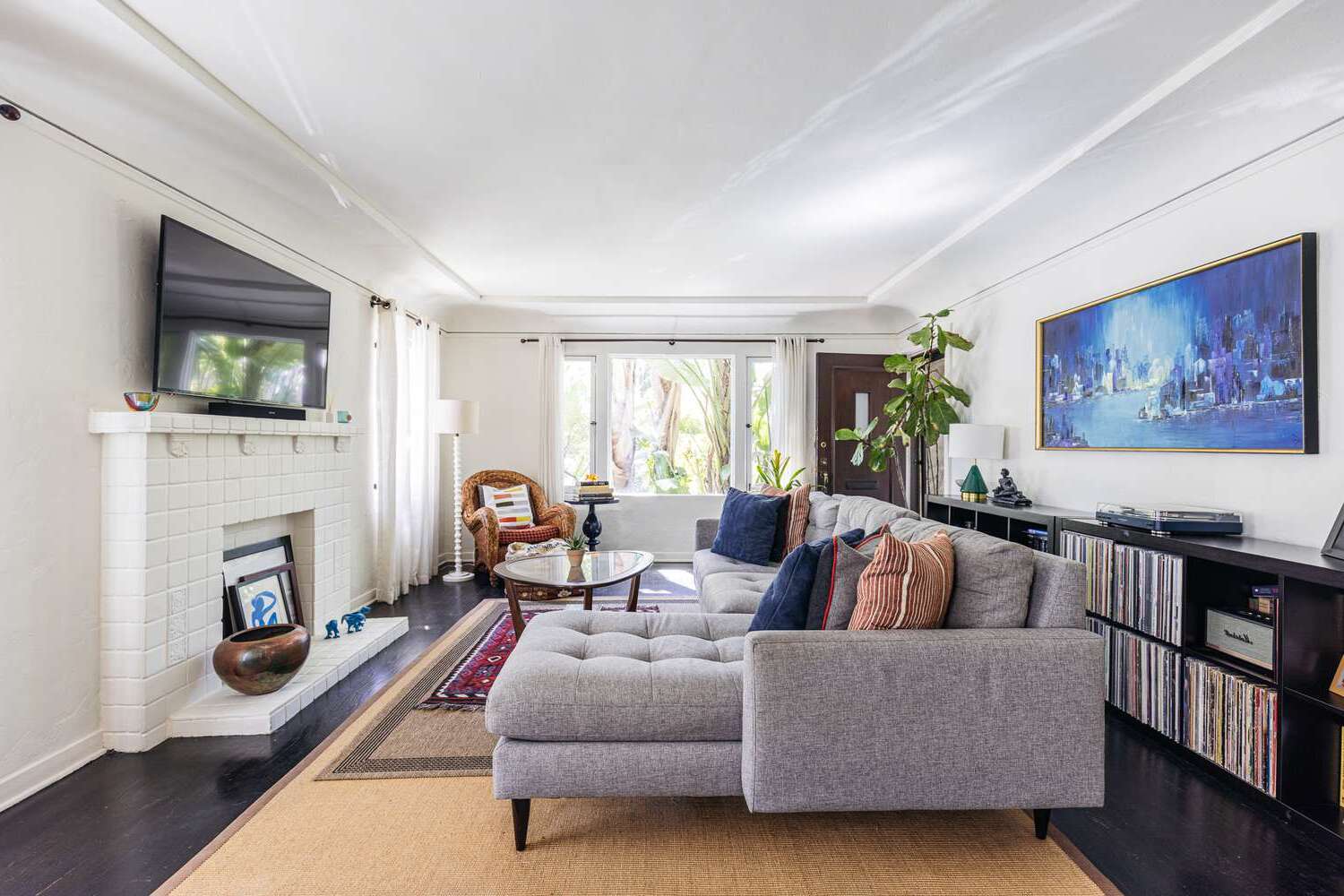
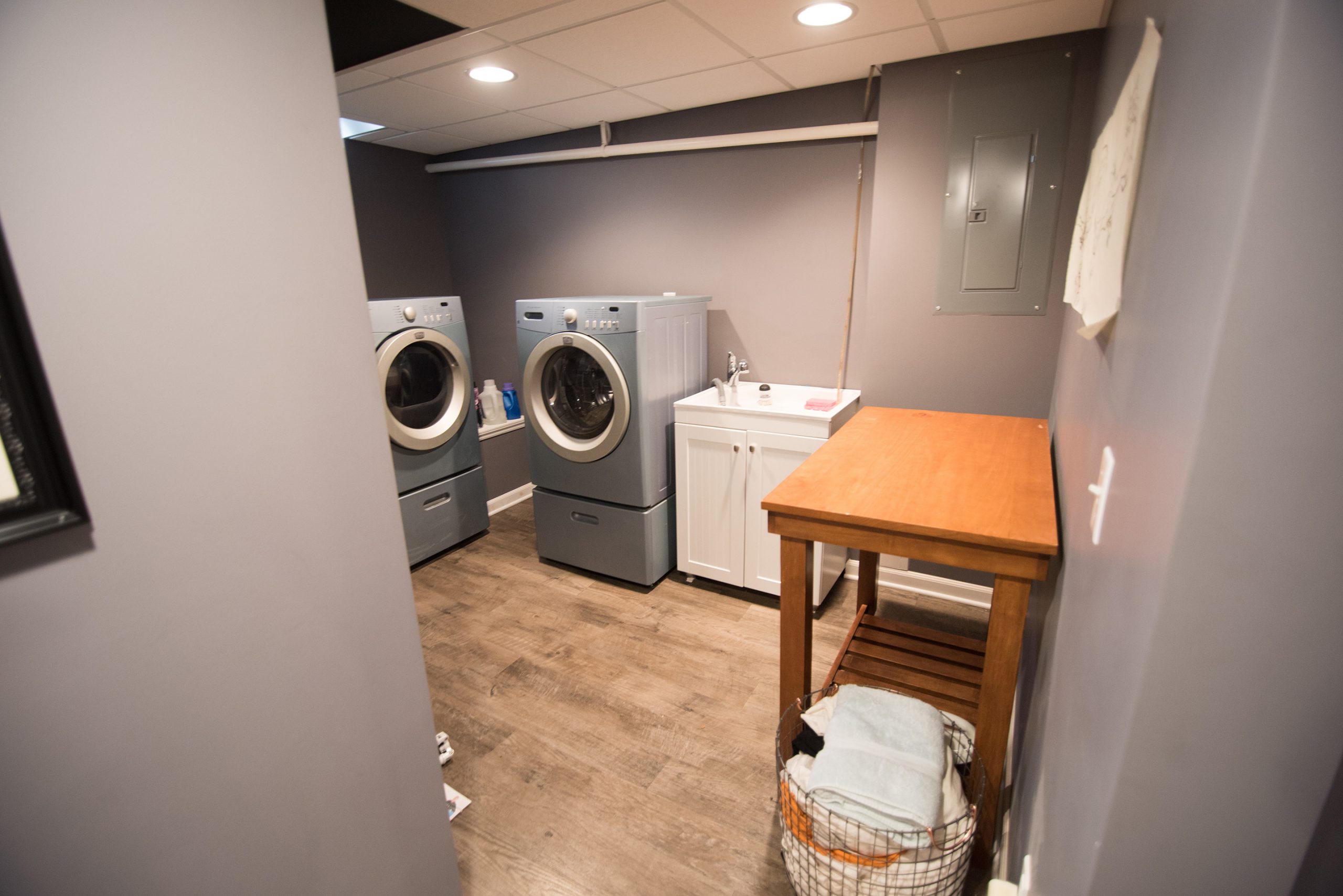
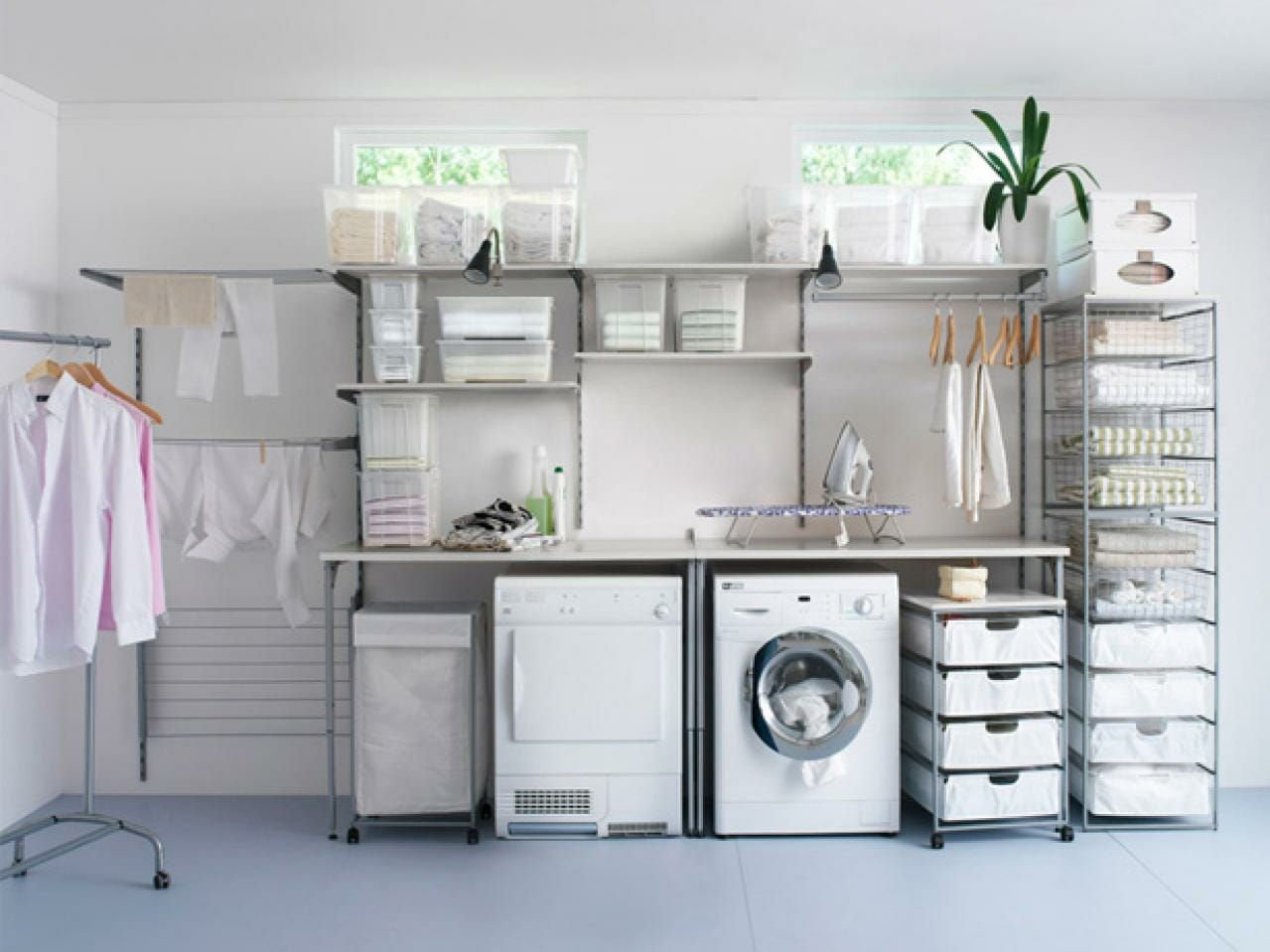
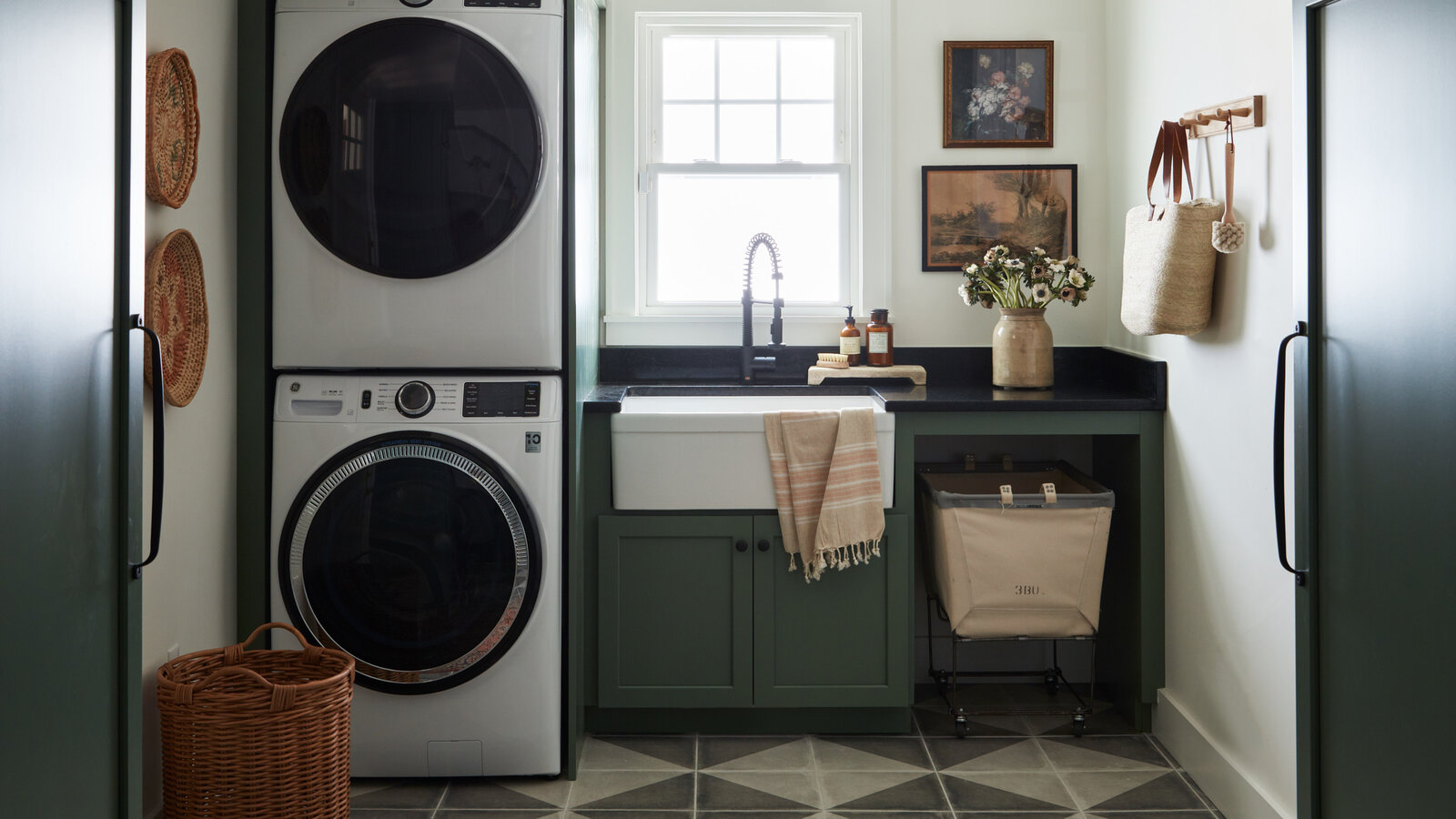

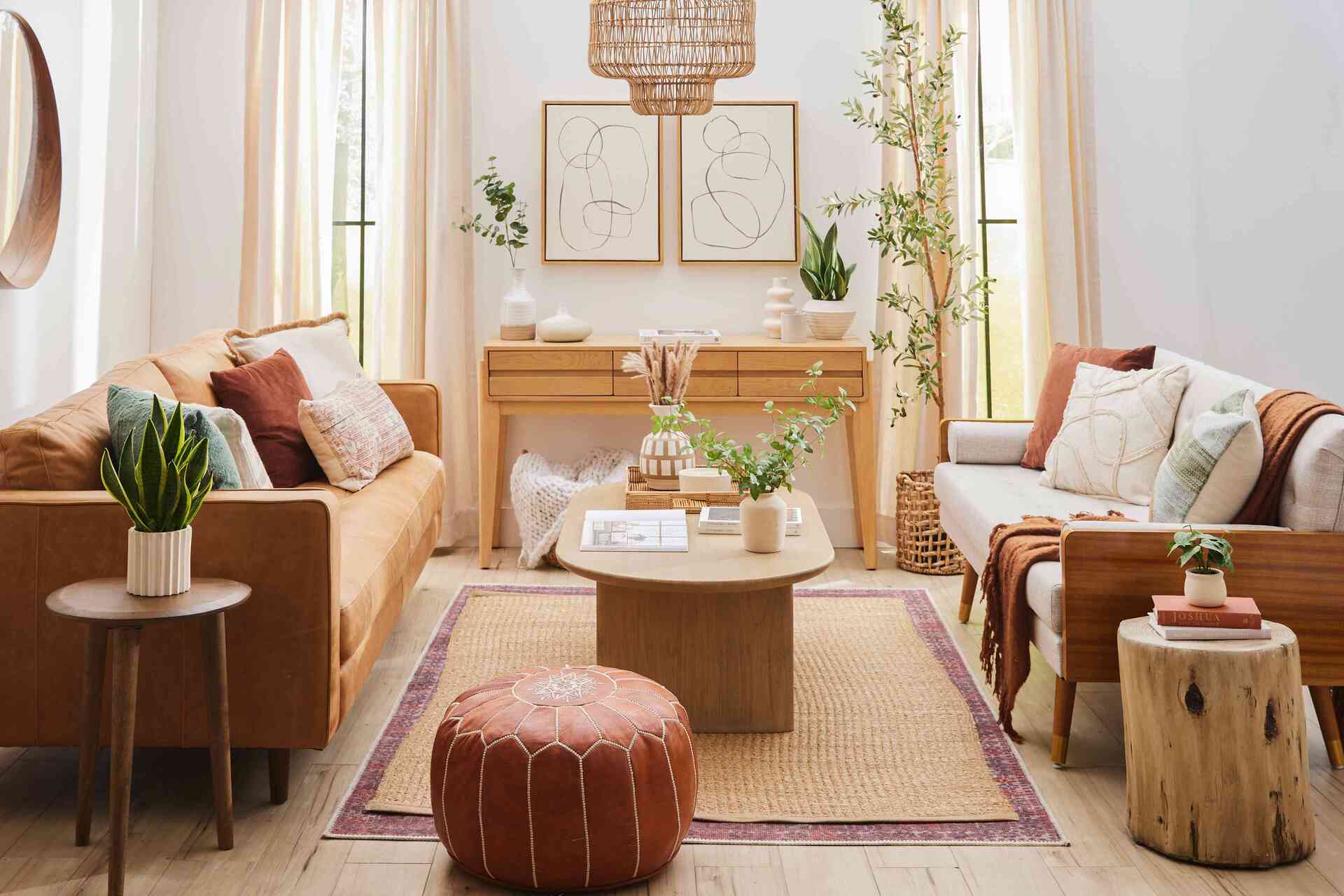

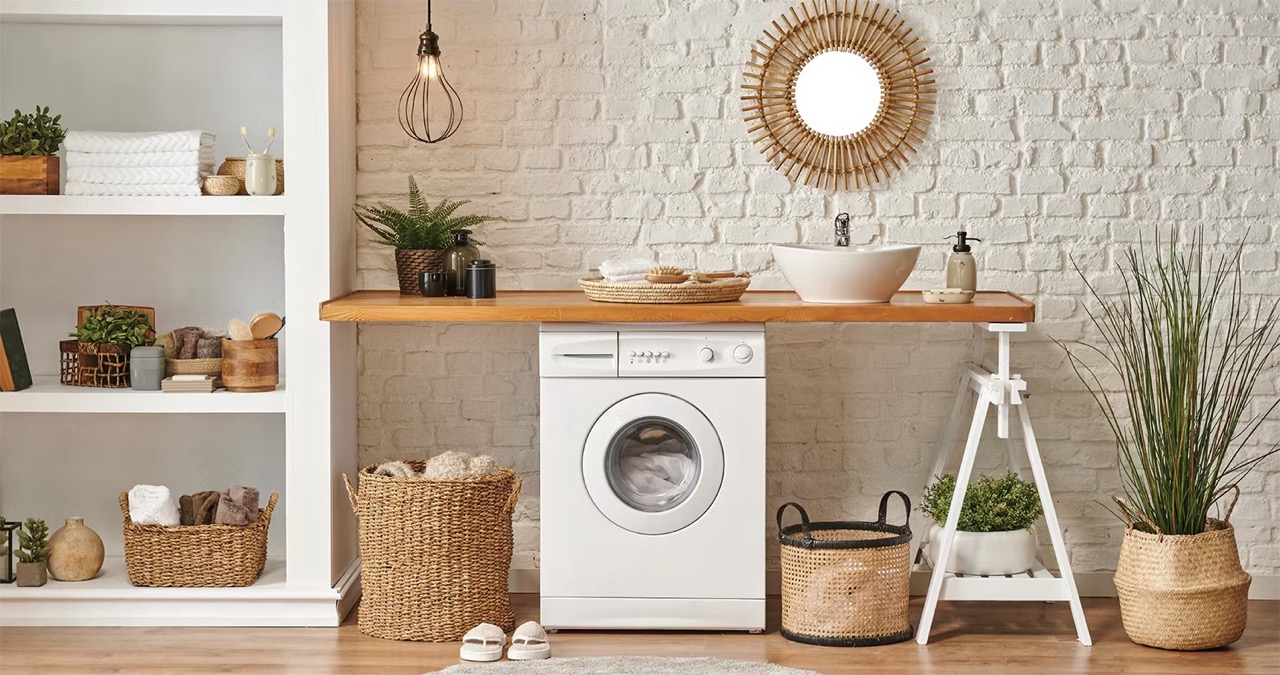
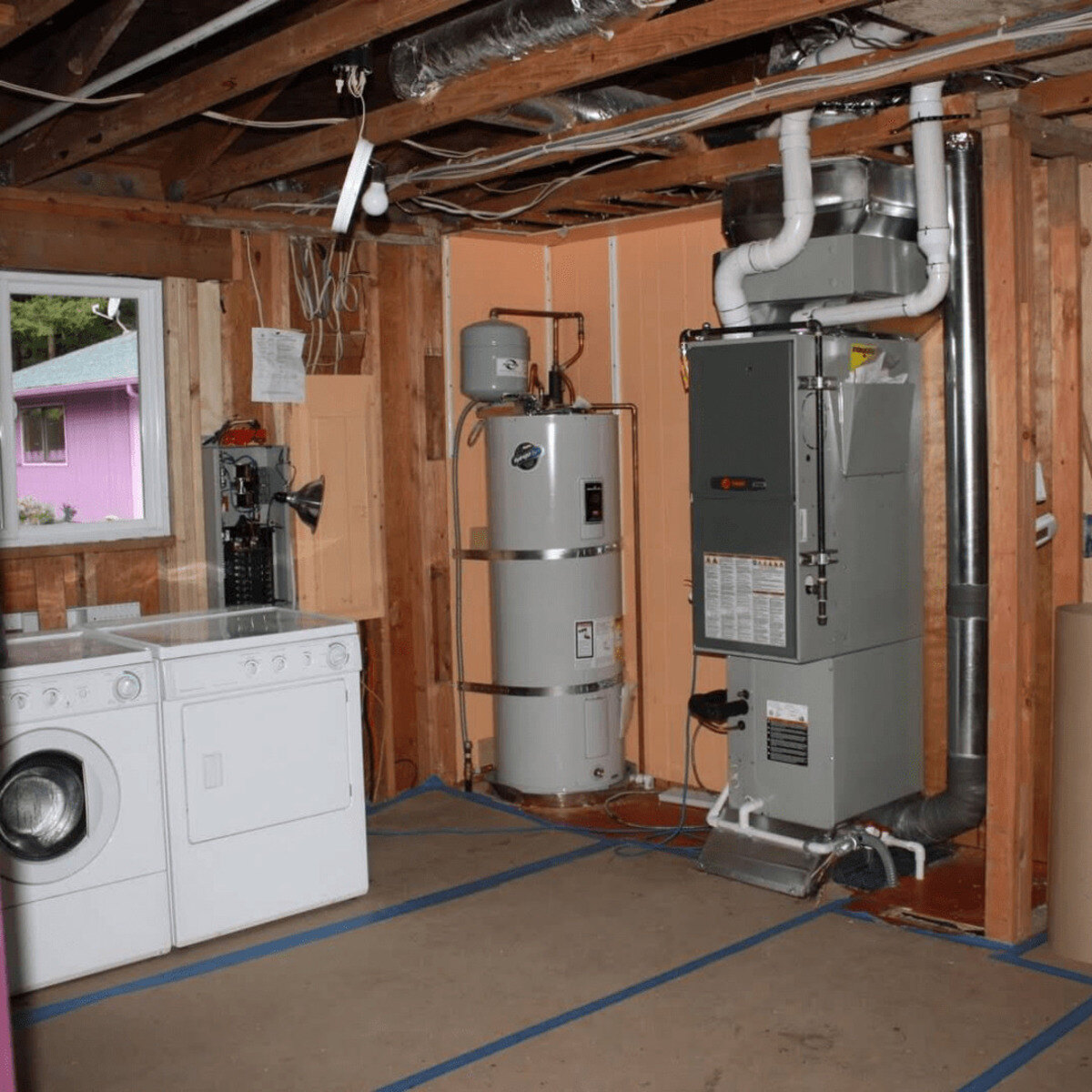
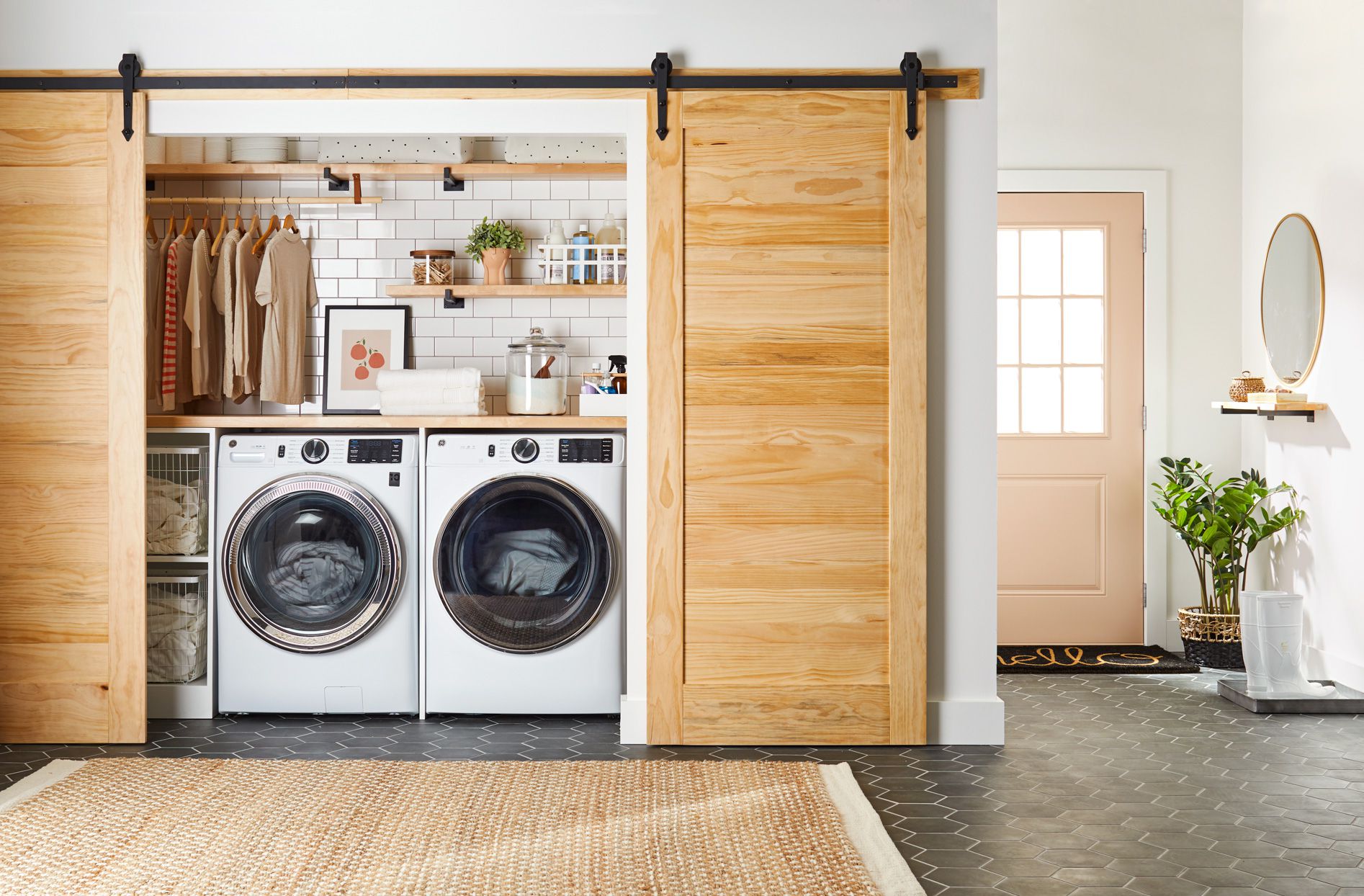
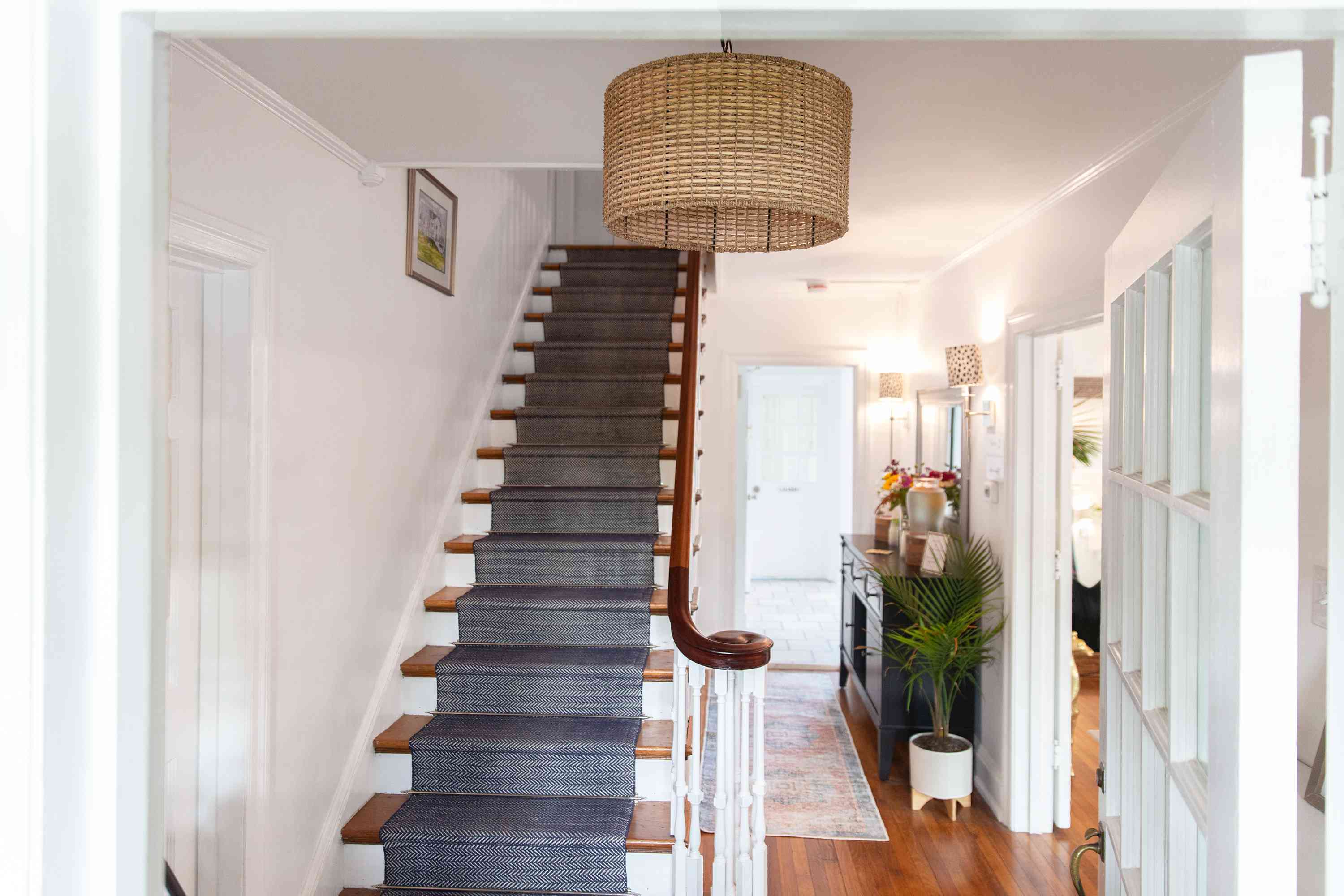
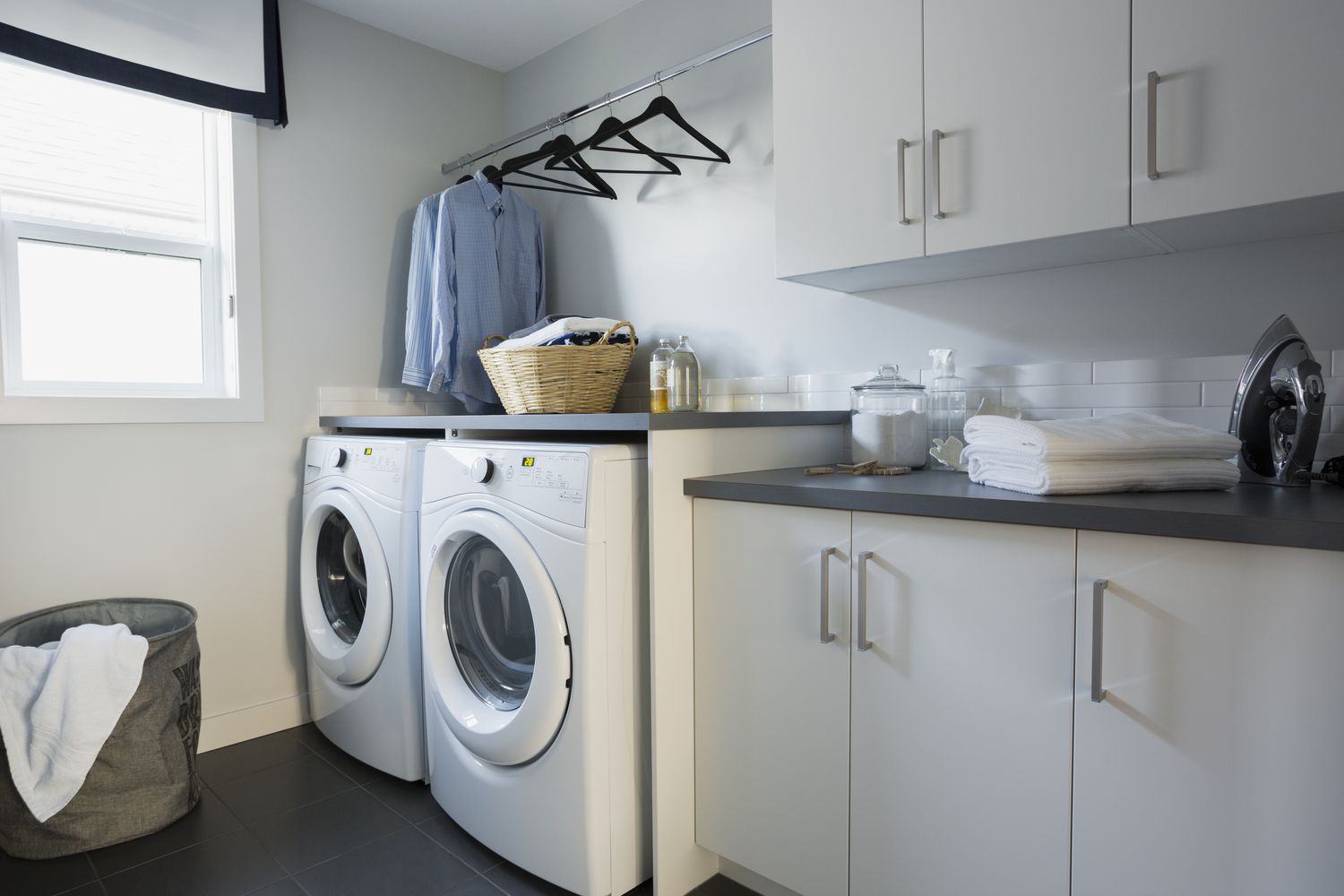
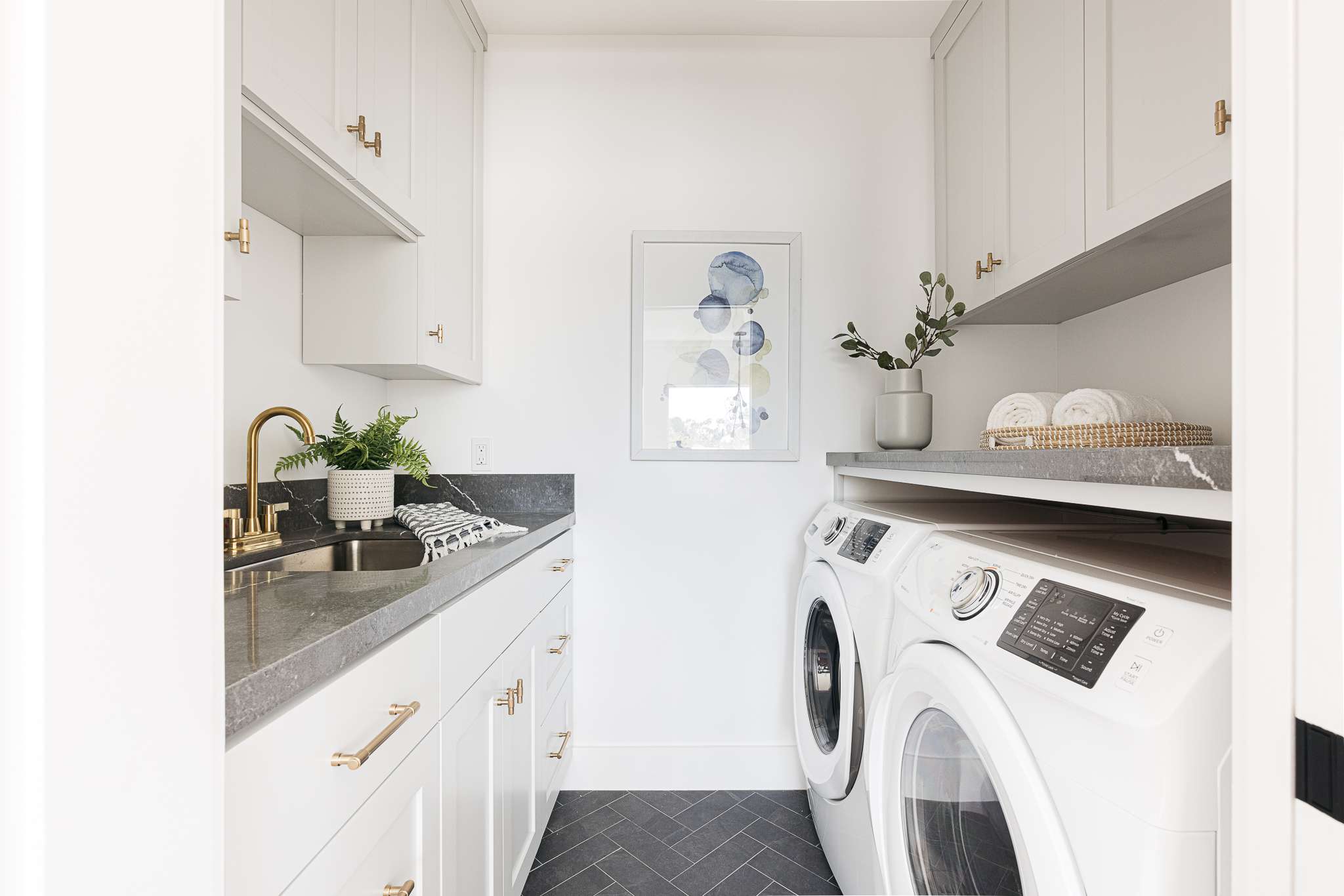

0 thoughts on “How To Design A Laundry Room: Expert Layout And Design Tips”